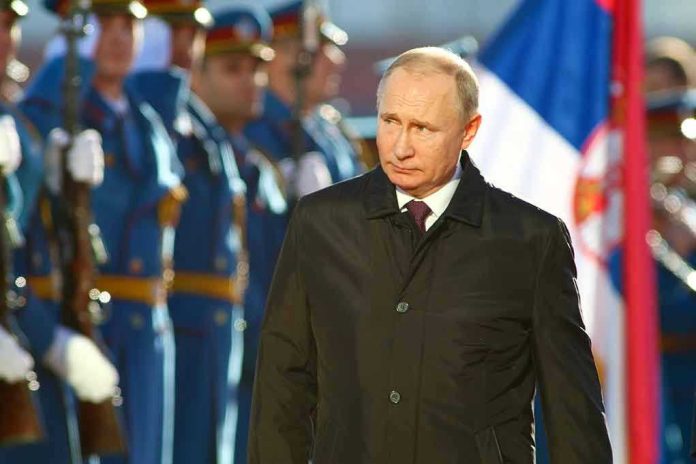
Putin’s ongoing refusal to meet Zelensky face-to-face keeps the 41-month war unresolved, challenging peace efforts.
Story Overview
- Putin has continuously declined face-to-face meetings with Zelensky since the war began.
- International mediation, including by the U.S., has failed to broker direct talks.
- Putin’s refusal symbolizes the war’s intractability and diplomatic stalemate.
- The conflict remains Europe’s largest since WWII, with significant global ramifications.
Putin’s Refusal to Engage Directly
Since the onset of Russia’s full-scale invasion of Ukraine in February 2022, Russian President Vladimir Putin has consistently refused to engage in direct talks with Ukrainian President Volodymyr Zelensky. Despite numerous appeals from Zelensky and international mediators, including recent efforts involving U.S. President Trump, Putin has either delegated discussions to his subordinates or imposed preconditions unacceptable to Ukraine. This stance has prolonged the conflict, which has now stretched over 41 months, marking an unprecedented duration without direct leader-to-leader dialogue.
The lack of direct engagement is a strategic decision by Putin, aimed at maintaining negotiating leverage and avoiding legitimizing Zelensky’s position. Analysts suggest this approach denies Ukraine a symbolic victory and underscores the power dynamics between the two nations. As a result, the conflict has become a protracted stalemate, exacerbating the humanitarian and geopolitical crisis in Europe. The absence of direct talks further complicates diplomatic efforts to resolve the conflict, forcing mediators to navigate a delicate and complex negotiation landscape.
International Mediation Efforts
International efforts to mediate the conflict have been persistent but largely ineffective in securing a direct summit between Putin and Zelensky. In August 2025, President Trump hosted a summit with Putin in Alaska, aiming to set the stage for potential direct talks. However, despite these efforts, no direct meeting has been arranged. Putin proposed hosting Zelensky in Moscow, an offer Zelensky promptly rejected, citing the unsuitability of Russian territory for peace discussions. The lack of progress highlights the diplomatic impasse and the challenges facing mediators.
Despite the stalemate, there is cautious optimism that renewed diplomatic efforts might eventually bear fruit. The U.S. and European leaders continue to push for a direct meeting, recognizing its potential impact on the war’s trajectory. However, the deeply entrenched positions of both sides suggest that any breakthrough will require significant concessions and a shift in the current power dynamics. The ongoing conflict has already taken a substantial toll on both Ukraine and Russia, further complicating the path to peace.
Impact and Future Prospects
The continued absence of direct talks has profound short-term and long-term implications. In the short term, the conflict’s persistence means rising casualties and a deepening humanitarian crisis, with displaced populations and economic disruptions affecting the region. In the long term, the entrenched positions may harden, reducing the likelihood of a negotiated settlement and raising the risk of a prolonged or frozen conflict. The situation also has significant implications for global energy markets and security dynamics.
The situation remains fluid, with potential shifts in the diplomatic landscape as negotiations continue. The international community’s role is crucial in applying pressure and facilitating dialogue, but the path to resolution is fraught with challenges. Only sustained and coordinated efforts among global powers may bring about a meaningful engagement between the conflicting parties, paving the way for a potential resolution to this enduring conflict.
Sources:
2025 Russia–United States Summit
Peace negotiations in the Russian invasion of Ukraine
Map of Ukraine and Call to Putin: What Did Washington Summit Reveal?
Trump, Zelenskyy, Europe Meeting
Putin Suggests Hosting Zelensky in Moscow for Peace Meeting









